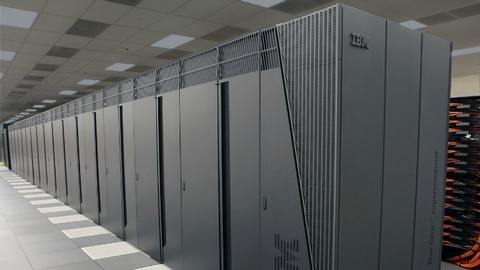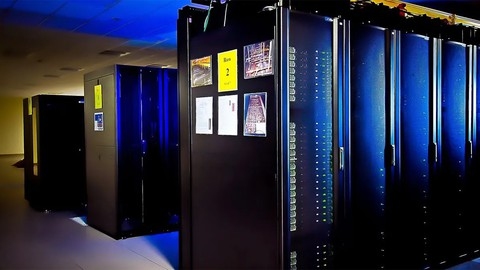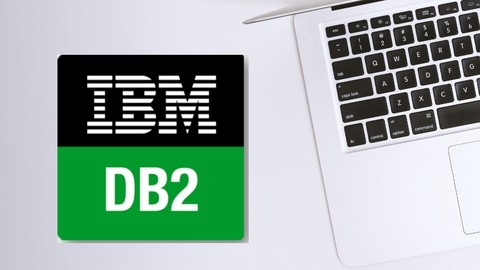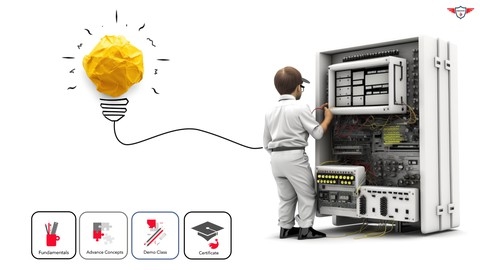If you’re searching for the best COBOL courses on Udemy, you’re in the right place.
Cobol, a programming language that has been around for decades, is still widely used in various industries, making it a valuable skill to have.
In this blog post, we’ll explore some of the top-rated Cobol courses on Udemy, helping you kickstart your journey to mastering this powerful language.
Mainframe: The Complete COBOL Course From Beginner To Expert
You’ll start by learning the basics of COBOL syntax, data types, and program structure.
The course covers essential COBOL statements like MOVE, DISPLAY, ACCEPT, and arithmetic operations like ADD, SUBTRACT, MULTIPLY, and DIVIDE.
You’ll dive into conditional processing with IF-ELSE and the powerful EVALUATE statement.
The course thoroughly explains PERFORM statements for iterations and loops.
You’ll learn how to work with internal tables (arrays) in COBOL, including 1D and 2D arrays, indexing with INDEXED BY and SUBSCRIPT.
String handling is covered in-depth, with STRING, UNSTRING, and INSPECT operations.
The course teaches inter-program communication using the CALL statement.
File handling is a major focus - you’ll work with sequential, indexed, and relative files, understanding file operations like OPEN, READ, WRITE, REWRITE, DELETE, and CLOSE.
The internal representation of data is explored through the USAGE clause, covering DISPLAY, COMP, COMP-1, COMP-2, and COMP-3.
You’ll even learn advanced COBOL programming with DB2, creating programs that perform database operations using cursors.
Importantly, you’ll gain hands-on experience connecting to a mainframe environment like MVS 3.8 from your local computer.
The course covers working with datasets (PS and PDS), using JCL for execution, and analyzing program output with SPOOL.
Mainframe: Code DB2 on COBOL Programs for Absolute Beginners
You’ll start with an introduction to DB2 and its hierarchy, covering important concepts like data types, SQL operations, and DDL operations like creating tables, views, altering tables, and dropping tables.
From there, you’ll dive into DML operations - inserting, selecting, updating, and deleting records from tables.
The course dedicates multiple lessons to different aspects of the SELECT statement, ensuring you master this crucial operation.
You’ll learn about keys and indexes, including unique keys, unique indexes, and primary keys.
The course also covers important database concepts like NULL, NOT NULL, DEFAULT values, and referential integrity, with coding examples to reinforce your understanding.
The real highlight is learning to code COBOL DB2 programs.
You’ll go through the steps of creating these programs, understanding JCL for precompiling, compiling, and link editing.
The course explains the bind process and the structure of COBOL DB2 programs in detail.
You’ll then code several COBOL DB2 programs for performing various DML operations.
There’s even a project to apply your learnings in a practical scenario.
The course doesn’t stop there - it covers handling unknown missing values in DB2 through indicators and processing multiple records from tables using COBOL DB2 programs.
You’ll also learn how to update the current record after fetching records.
Mainframe COBOL Developer Training By Anil Polsani
The course starts with an introduction to the mainframe environment, covering COBOL, JCL, and Z/OS.
You’ll learn about TSO and ISPF, which are essential tools for working on the mainframe.
Moving on to COBOL, the course covers the fundamentals, including variable declaration, accept-display statements, and computations.
You’ll learn how to use the MOVE statement for data movement and the IF statement for conditional logic.
The course also covers control sequences using PERFORM and GOTO statements, with practical examples to reinforce your understanding.
File concepts are a crucial part of COBOL programming, and this course dedicates several classes to this topic.
You’ll learn about copybooks and how to run JCL to execute your COBOL programs.
Data security and memory-saving techniques are also covered, ensuring you understand best practices.
The course delves into more advanced topics like redefines, matching logic, and the OCCURS clause for working with arrays.
You’ll also learn how to use the CALL statement for modular programming and string handling techniques.
Throughout the course, you’ll work on a real-time project, allowing you to apply the concepts you’ve learned in a practical setting.
Mainframe - COBOL DB2 - Basic to Advance Level
This course starts with an introduction to DB2 and its object hierarchy.
You’ll learn about the different roles of developers and DBAs, as well as data types and SQL fundamentals.
One of the key aspects of the course is its focus on practical, hands-on learning.
You’ll get to use tools like QMF and SPUFI to create, alter, and drop tables, as well as work with referential integrity and delete rules.
The course dives deep into DML statements like INSERT, UPDATE, DELETE, and SELECT, including the use of views.
For those interested in application programming, the course covers COBOL-DB2 integration in detail.
You’ll learn how to call DB2 in different ways, work with host variables, and understand the DCLGEN process.
The course walks you through writing SQL queries in COBOL programs, compiling and running them, and handling SQLCA (SQL Communication Area).
The syllabus also covers advanced topics like cursors, their life cycle, and cursor programming.
You’ll gain practical experience with SQL queries, including aggregate functions, logical operators, computations, and group by clauses.
The course explores various types of joins, subqueries (nested and correlated), and set operations like UNION and UNION ALL.
One of the standout features is the comprehensive coverage of referential integrity, primary keys, foreign keys, and on delete rules.
You’ll learn how to work with these concepts through practical examples and exercises.
Towards the end, the course delves into more advanced topics like COBOL DB2 compilation, precompiling, binding, and plan creation.
You’ll understand the different bind parameters and their implications.
Throughout the course, you’ll work with real-world examples and scenarios, ensuring that you gain practical experience in addition to theoretical knowledge.
COBOL Complete Reference Course!
You’ll start by learning about the IBM mainframe environment and how to set up your COBOL development environment.
The course then dives into the core concepts of COBOL, including its features, history, and why it remains dominant in enterprise computing.
You’ll learn about data types, program structure, coding rules, and the four divisions of a COBOL program.
Once you have the basics down, you’ll explore control structures like loops, conditional statements, and the GOTO statement.
The course covers string manipulation extensively, teaching you how to use statements like STRING, UNSTRING, INSPECT, and reference modification.
You’ll also learn advanced techniques like calling other programs, using copybooks, and leveraging intrinsic functions.
Tables and arrays are covered in-depth, including how to define them, load data, search, and use indexes and subscripts.
The course teaches you how to define and move data between fields, covering topics like the USAGE clause, numeric and alphanumeric moves, and clauses like BLANK WHEN ZERO.
You’ll master arithmetic operations, learning how to add, subtract, multiply, divide, and use the COMPUTE statement.
File handling is a major focus, covering file organizations, access modes, and statements for opening, closing, reading, writing, rewriting, and deleting records.
You’ll learn how to process sequential, VSAM, and indexed files.
The course also covers sorting and merging files using the SORT and MERGE statements.
You’ll understand the COBOL compilation process, compiler options, and how to compile for environments like CICS and DB2.
Interestingly, the syllabus covers integrating web services into COBOL programs using XML and JSON.
You’ll learn how to parse and generate these formats.
Program design and structure are emphasized, teaching you how to create hierarchy charts and design structured COBOL applications.
Exception handling using the DECLARATIVE section is also included.
The course provides examples of integrating COBOL with systems like CICS, DB2, and IMS.
It even includes a section on common COBOL interview questions to prepare you for jobs.
Learn Mainframe COBOL - Beginner to Expert
This course starts with an introduction to COBOL, covering its features and different types.
You’ll learn about coding sheets and the language structure, including the Identification, Environment, and DATA divisions.
The course dives deep into variable declaration, data types, and level numbers.
You’ll practice working with different data types, groups, and elementary data types.
It covers assigning static and dynamic data to variables, as well as input/output operations like ACCEPT and DISPLAY statements.
You’ll learn about various COBOL operations like MOVE, CORRESPONDING, STRING, UNSTRING, and reference modification.
The course also covers arithmetic operations and editing characters.
It introduces level number 88 for condition handling and the REDEFINES clause for memory management.
The course covers essential COBOL concepts like IF statements, logical operations, EVALUATE, and PERFORM (both inline and outline).
You’ll learn about arrays using the OCCURS clause, including 1D, 2D, and 3D arrays.
It also covers the SEARCH and SEARCH ALL operations, as well as the difference between SUBSCRIPT and INDEX.
The course provides a complete overview of file concepts in COBOL, including the FILLER concept.
You’ll learn how to read, write, and update files, as well as how to use copybooks and the CALL statement.
It covers the differences between CALL and COPY, as well as between main and sub-programs.
The course also covers sorting and merging data, as well as the INSPECT statement.
It provides hands-on experience with different file organizations like ESDS (Entry-Sequenced Data Set) and KSDS (Key-Sequenced Data Set), teaching you how to read and write data to these file types.
Throughout the course, you’ll gain practical experience by compiling, line-editing, and running COBOL programs.
Introduction to COBOL
This course starts by introducing you to COBOL, a programming language that has been widely used in business applications for decades.
You’ll learn what COBOL is and its importance in the industry.
After this introduction, the course dives right into quizzes to test your understanding of the basics.
Next, you’ll download and install the necessary software to start coding in COBOL.
The course then provides an in-depth introduction to the COBOL programming process and its different divisions - Identification, Environment, Data, and Procedure.
You’ll learn about the Identification Division, which specifies the program’s name and other identifying information.
The Environment Division covers the configuration details for compiling and running the program.
The Data Division is where you define the data structures and variables used in the program.
A major focus is the Procedure Division, which contains the actual logic and code for your COBOL program.
You’ll learn how to write complete, practical COBOL programs step-by-step over two parts.
Learn Introductory Programming With COBOL
You’ll start with an introduction to COBOL and setting up the test environment using the OpenCOBOL IDE.
This will help you get familiar with the development tools before diving into the core concepts.
The course then dives into the basics of COBOL programming, including program structure, variables, data organization, and comments.
You’ll learn how to write simple programs and understand how they work under the hood.
Once you have a solid foundation, the course moves on to more advanced topics like input/output operations using the ACCEPT and DISPLAY statements.
You’ll also learn about conditionals (if/then statements) and loops, which are essential for writing complex programs.
The course covers important data structures like arrays and tables, along with searching algorithms like linear and binary search.
This will help you organize and manipulate data effectively in your COBOL programs.
File handling is another crucial aspect covered in the course.
You’ll learn how to create output report files from input files, which is a common task in many COBOL applications.
The course also introduces you to modular programming concepts like subprograms and linkage, which will help you write more organized and maintainable code.
Additionally, you’ll get a glimpse of COBOL’s integration with other software and systems, including JCL (Job Control Language) for mainframe environments.
Modern COBOL: Professional Programmer’s Fast-Track
This course starts with an introduction to COBOL and its core concepts, such as words, sentences, and paragraphs.
You’ll learn how to create a “COBOL Action Plan” and explore a COBOL compilation example.
One unique aspect of the course is the “Spelunking COBOL” section, where you’ll dive deep into the language’s structure.
You’ll also learn about the “Railroad” syntax and the Standard 2014 with its 101 functions.
The course takes a hands-on approach with several “Try this at home!”
exercises, including command-line exploration and working with divisions and evolutionary examples.
You’ll go through multiple sprints, covering topics like data types, loops, graceful loop exits, and user-defined “Level 88” words.
Importantly, the course covers essential COBOL concepts like table indexing, searching, and sorting arrays.
You’ll learn best practices such as replacing multiple IF statements with EVALUATE and implementing a single exit point.
The course also includes a reactive flow chart activity, where you’ll document the solution you’ve coded, reinforcing your understanding of the material.
Throughout the course, you’ll work with both COBOL and GnuCOBOL, allowing you to compare and contrast different implementations of the language.
The Complete Course of COBOL 2024
You will start by learning the history and overview of COBOL, followed by setting up the development environment and compiling your first program.
The course covers the fundamentals of COBOL programming, including data types, variables, arithmetic operations, and program structure.
You will learn how to write conditional statements using IF, ELSE, and THEN constructs, as well as how to handle nested conditions.
Loops and iteration are crucial concepts in programming, and the course dedicates a section to teaching you various looping techniques, such as inline perform, perform thru, perform until, perform times, and perform varying.
You will also learn about the CONTINUE and next sentence statements.
File handling is an essential aspect of COBOL programming, and the course covers file organization and input/output operations.
You will have the opportunity to apply your knowledge through practical exercises.
The course delves into arrays and tables, covering one-dimensional and two-dimensional arrays, subscripts, indexes, and the SET statement.
You will learn how to search and search all within arrays.
Subprograms and functions are introduced, including called program theory, call by reference, and call by content.
String handling in COBOL is also covered, with a focus on the INSPECT, STRING, and UNSTRING statements.
Best practices and industry standards are emphasized, including COBOL coding standards and the role of COBOL in modern IT environments.
The course culminates with final projects that allow you to apply your newly acquired skills.
Throughout the course, you will encounter quizzes to reinforce your understanding of the concepts covered.










